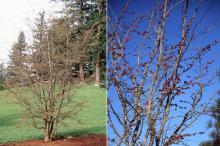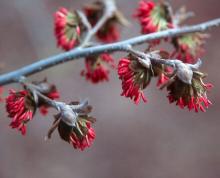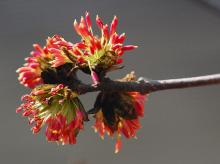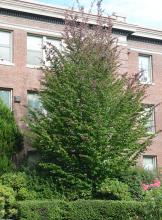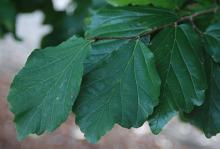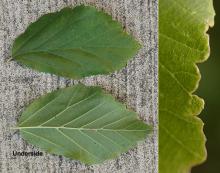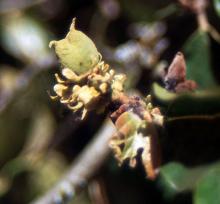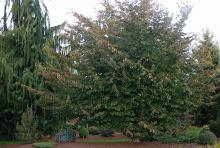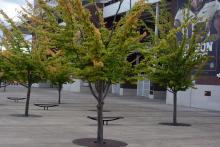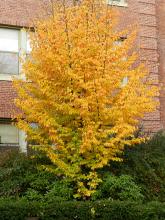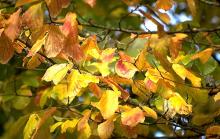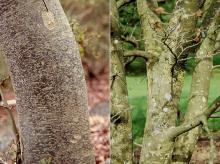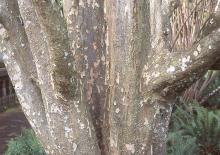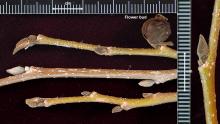Parrotia persica
Common name:
Persian Parrotia
Persian Ironwood
Pronunciation:
par-RO-ti-a PER-si-ka
Family:
Hamamelidaceae
Genus:
Type:
Broadleaf
Native to (or naturalized in) Oregon:
No
- Broadleaf deciduous tree/shrub, 20-50 ft (6-15 m) high, rounded, upright, wide spreading branches, often with several trunks. Bark exfoliating, producing a mosaic of green, white and brown. Leaves alternate, simple, 6-12 cm long by 2.5-6 cm wide, oval to obovate-oblong, conspicuous stipules, coarsely crenate-dentate above the middle, undulate, (shape resembles Hamamelis), dark green in summer; yellow, orange to brilliant red in fall. Flowers without petals (apetalous), have showy red stamens, appear before leaves. Fruit is a brown, 2-valved capsule.
- Sun to light shade. Prefers well-drained, slightly acid, loam soils.
- Hardy to USDA Zone 5 Native to Iran, Iraq
- Parrotia: after the German naturalist, F.W. Parrot. persica: of Persia (Iran)
- Oregon State Univ. campus: in front of Gilkey Hall
Click image to enlarge

